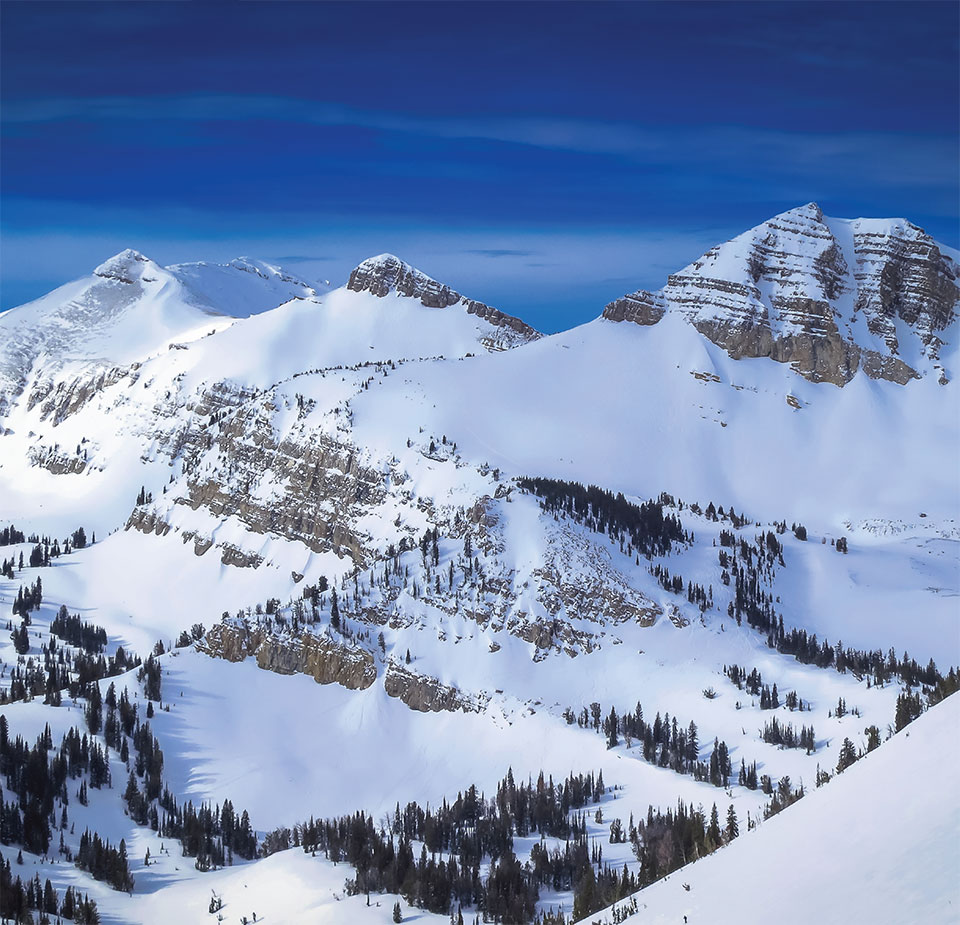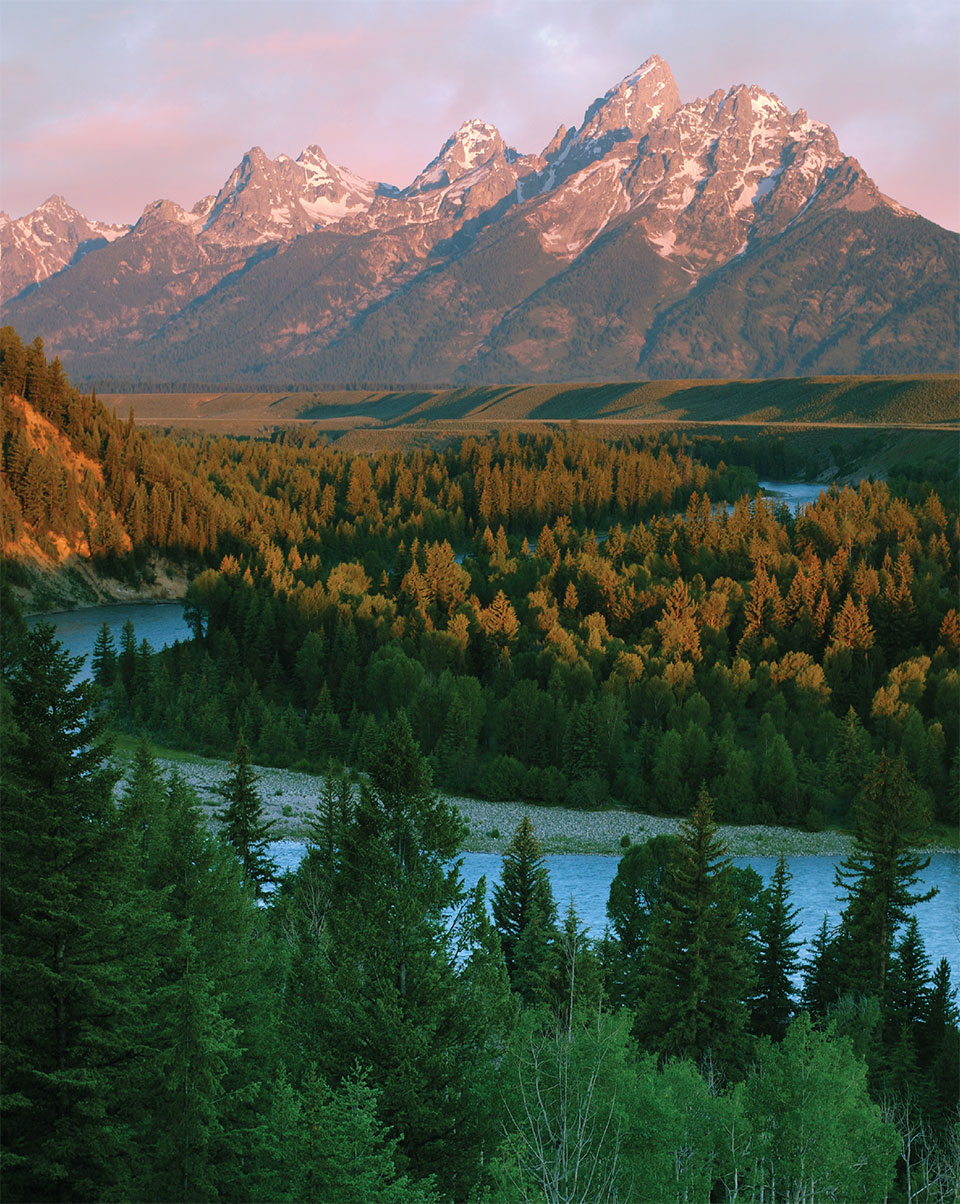Where Does Our Water Come From
by Cassidy Mantor
Saguaro cacti and layers of sun-bleached limestone. Barren, rusted landscapes. Southwestern skies from Georgia O’Keeffe paintings and Edward Abbey’s cloud studies. Dramatic Wylie E. Coyote-style talus slopes and cliffs dropping off into the Colorado River. The Grand Canyon. The red rocks in Sedona and Moab. Coachella. Palm Springs. Las Vegas. Arches and Canyonlands National Parks. The desert is an oft-romanticized part of the American West for good reason.
The landscapes are profoundly different from other more hydrated parts of our country, like Jackson and the surrounding mountain playground in the Teton Valley. Except that as a town in Wyoming, Jackson is part of the ecosystem of the fourth-driest state in the country. As of mid-April, 2023, the U.S. Drought Monitor found that Teton County was still in a state of moderate to severe drought despite last winter’s heavy snowfall. It’s troublesome because while Jackson’s elevation and positioning means it receives more precipitation than other parts of the state, most of the county was still parched despite the exceptionally wet 2022-2023 winter.
As of mid-April, 2023, the U.S. Drought Monitor found that Teton County was still in a state of moderate to severe drought despite last winter’s heavy snowfall.
When we think of Jackson, we think of high alpine meadows and steep and deep skiing, not the thirsty cracked land and arid climate of the desert Southwest. However, scientists are predicting more extreme weather that will result in lower snowpack. Agriculture will be affected, not to mention the increase in wildfires. Developing best practices for water use is a major consideration for Jackson, especially as it continues to grow.
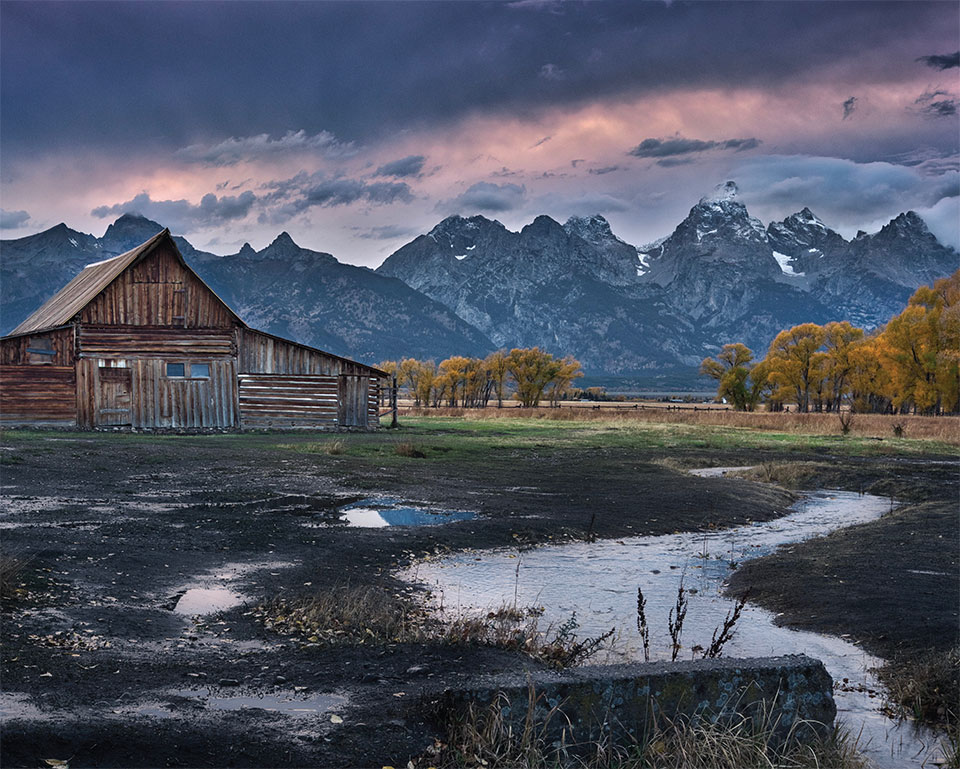
Conservation practices reduce costs of supplying water and prolong the life of the municipal water infrastructure. Using less water also reduces our impact on the environment and preserves resources for future generations who live, work, and play in and around Jackson.
Where does our tap water come from?
Drinking water in Jackson comes from five groundwater wells in the Snake River Alluvial Aquifer. That water flows from the base of the mountains into rivers, lakes, streams, ponds, springs, and wells. With a population of 11,000 people and five water sources, it seems like water shouldn’t be a major concern.
It’s more complicated, though. The water from Jackson Lake flows into the Snake River, which supplies water to Idaho, Oregon, Washington, and to the mouth of the Columbia River. As an Upper Basin State, Wyoming is also one of seven states entitled to source water from the Colorado River. Wyoming actually under-uses its allotted 15% of Colorado River water, drawing only about 11% of its allotment from the Green River, a tributary to the Colorado. The 100-year-old pact is probably due for a revision, since Wyoming also sends water down to Lake Mead, but as water levels continue to fall downstream, it would seem that Wyoming is poised to shoulder more of the water burden for the greater West. As the Teton Valley continues to expand, local demand for water increases. Although Wyoming is currently under-using its federal allotment of water, Jackson is part of a water system that has a much greater impact on agriculture and neighboring states in the West.
So why are we talking about water now? At the risk of sounding like an environmental Chicken Little, adopting widespread water conservation practices will help Jackson save every last drop of water, something that will come in handy in dry years as well as ones with heavy snowfall – like last year. Conservation practices reduce costs of supplying water and prolong the life of the municipal water infrastructure. Using less water also reduces our impact on the environment and preserves resources for future generations who live, work, and play in and around Jackson.
Water has always been one of the most precious resources in the West. Now, as more people make Jackson home, WHJ is leading a discussion on responsible water use and conservation. You built your dream house here because you loved the place. Now it’s time to understand how to take care of the place and what it will take to keep the dream alive.
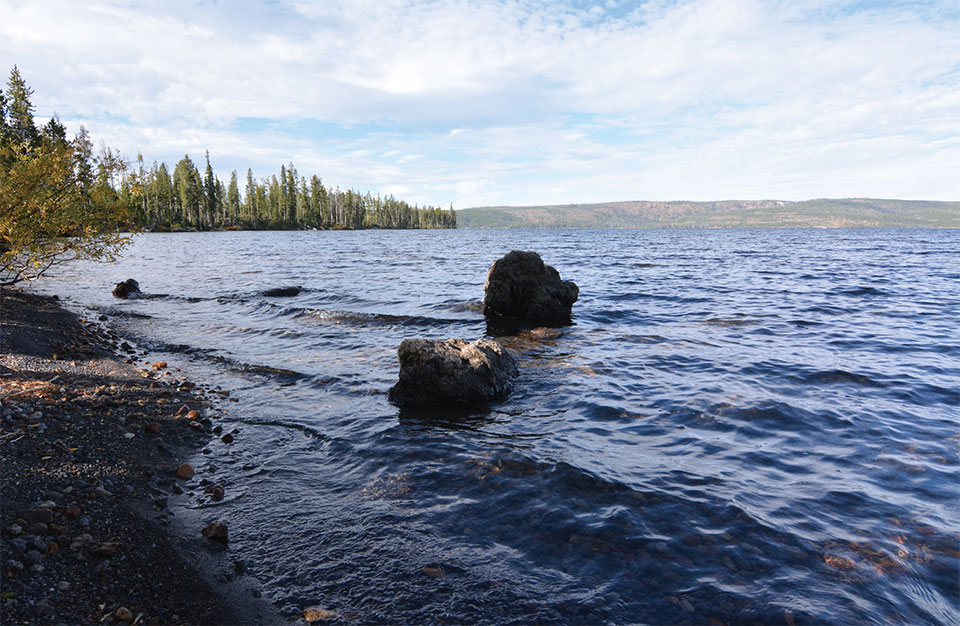
Hardscaping is another responsible way to add visual interest and benefit the environment. Pavers can divert rainwater and be laid to capture water and provide natural irrigation.
What Can You Do?
Smart landscaping is one of the main changes that we all can make to support the environment. In 2022, the Teton Conservation District launched a conservation planting program to support agricultural and native vegetation projects. The program’s residential arm aims to help people incorporate native plants into their landscaping. They will provide hands-on support through a “walk-and-talk” to identify vegetation and provide recommendations. The Teton Conservation District’s program includes grants. The pollinator gardens at Jackson Hole High School, Munger Elementary School, and Teton Pines Open Space are examples meant to educate and inspire greater conservation efforts.
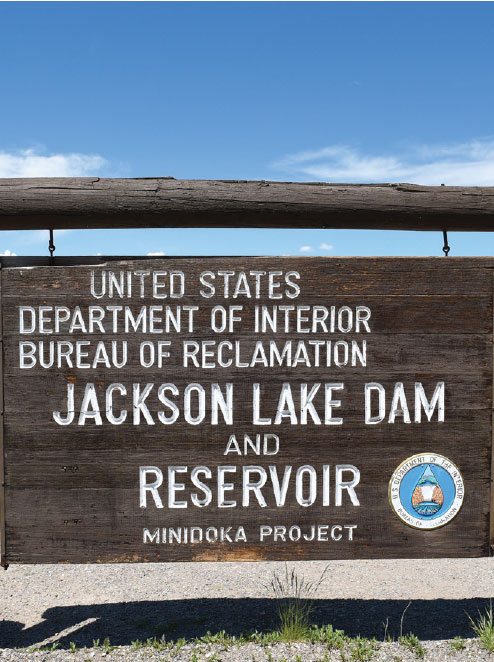
The Teton Conservation District launched a conservation planting program to support agricultural and native vegetation projects. The program’s residential arm aims to help people incorporate native plants into their landscaping.
With a significant portion of water being used for landscape irrigation, hardscaping is another responsible way to add visual interest and benefit the environment. Pavers can divert rainwater and be laid to capture water and provide natural irrigation. Renovating and remodeling with high-efficiency shower heads and appliances and evaluating sprinkler and irrigation systems are also ways to prioritize water conservation in the home.
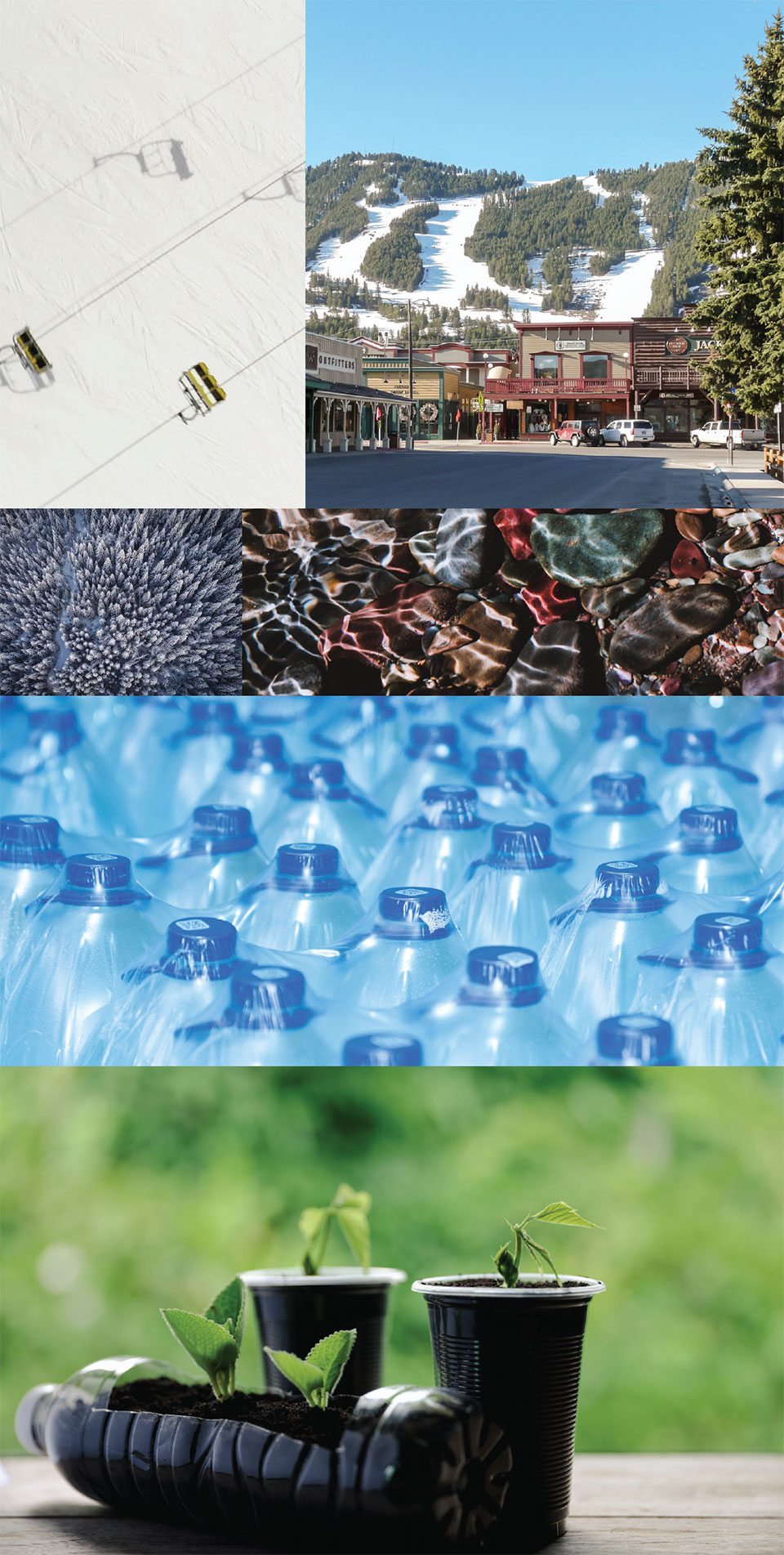
Small Changes Add Up
Planting differently, composting, and educating ourselves on water use will lead to becoming more responsible citizens.
We’ve become accustomed to switching single-use plastic for reusable water bottles. Opting for no straw or using a compostable one minimally affects our lives but has a positive impact on the greater environment. Planting differently, composting, and educating ourselves on water use will lead to becoming more responsible citizens. Water doesn’t just come from our taps. The sooner we shift our consciousness, the longer we will be able to enjoy the places we have come to love.
